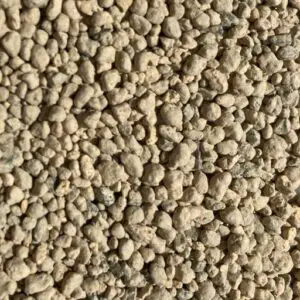Is Sand Good For Bonsai?
Can I Use Sand in Bonsai Soil?
Sand is an essential ingredient of bonsai soil mix; every bonsai species need a certain percentage of sand in its bonsai soil mix. Mixing sand is necessary as it helps drainage that good bonsai soil mix needs.
In fact, coniferous bonsai trees are traditionally grown in a soil of 100% sand in the Western part of Japan where good river sand is available.
Standard combination of bonsai mix is as follows:
| Bonsai Type | % of Sand | % of Akadama | % of Humus |
| Coniferous | 40-80% | 30-50% | 0% |
| Deciduous | 10-20% | 50-80% | 10-20% |
| Flower/fruits | 30-40% | 40-50% | 20-30% |
Definition of Sand
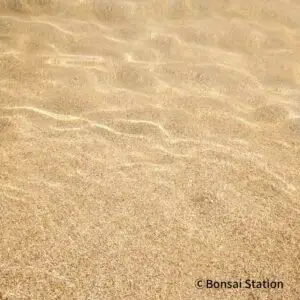
By Unified Soil Classification System, sand is defined as a granular material composed of finely divided rock and mineral particles with a diameter of between 0.074 and 4.75 millimeters.
Particles larger than this size is called gravel and smaller silt.
(Source: California Department of Transportation- link here)
Classification of Sand
By Natural Source
Based on sources in nature, sand can be classified into 3 types:
- Pit sand
- River sand
- Sea sand
Pit sand
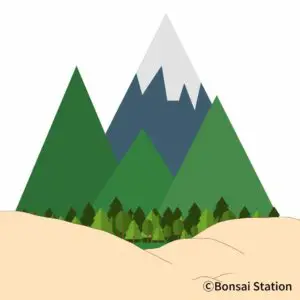
Pit sand is the type of sand extracted by digging 7-10 feet underneath the ground.
River sand
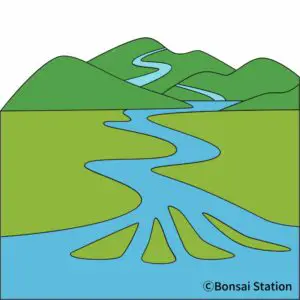
River sand is the type of sand collected from the river bed that is made from weathering or erosion processes.
Sea sand
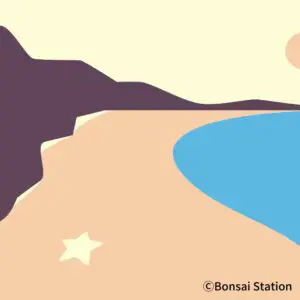
Sea sand is the type of sand collected from sea floor or seashore.
By Rock Type
Sand is formed when rocks break down from weathering and eroding over a very long period of time. There are three types of rocks based on how they are formed:
- Igneous rocks (volcanic)
- Sedimentary rocks and
- Metamorphic rocks.
Type of Sand Suited for Bonsai
Good bonsai sand

The type of sand suited for bonsai is pit sand formed from volcanic rocks.
Bonsai soil requires the following three qualities so as bonsai sand:
- good water retention
- good drainage and
- good aeration.
Pit sand formed from volcanic rocks is porous and permeable; its water holding capacity is high yet has good drainage, and has a good aeration capacity as well.
Pore spaces in this type of sand facilitate the availability and movement of air and water in the soil environment. Volcanic soil has a higher porosity rate than non-volcanic soil, as seen in the table below.
Porosity of volcanic and non-volcanic soil (rough indication)
| Type of soil | Porosity |
| Volcanic | 70-80% |
| Non-volcanic | 55-60% |
Can river sand be used for bonsai?

River sand can be used for bonsai only if the following conditions are met.
- Sand is volcanic as that from granite, and
- Sand is collected upstream which has a sharp and angular form.
River sand is usually fine, round and polished as it is rubbed in the water currents. This type of river sand drains water very well but cannot hold water, which is not ideal for bonsai soil.
On the other hand, volcanic river sand collected upstream has a sharp and angular form as erosion in the water currents has not progressed. In fact, this type of river sand is used for bonsai particularly in Western Japan, where the one with these qualities is readily available in the region.
Specific Brand of Bonsai Sand in Japan
Kiryu sand
Type: Volcanic pit sand
Origin: Northern Japan
Characteristics: Good water retention and drainage. Slightly soft but harder to degrade over time. Higher percentage of iron.
PH: Neutral
Fuji sand
Type: Volcanic pit sand
Origin: Around Mt. Fuji (central Japan)
Characteristics: Good water retention and drainage. Very firm and harder to degrade over time. Higher percentage of iron.
PH: Slightly acidic
Yahagi sand / Tenjin sand / Shirakawa sand
Type: River sand
Origin: Western Japan
Characteristics: Good drainage and good water retention as river sand. Formed from granite. Very firm.
PH: Neutral


